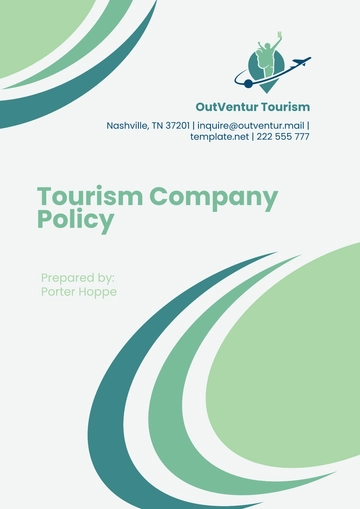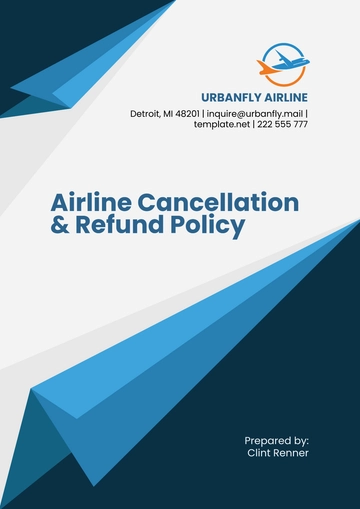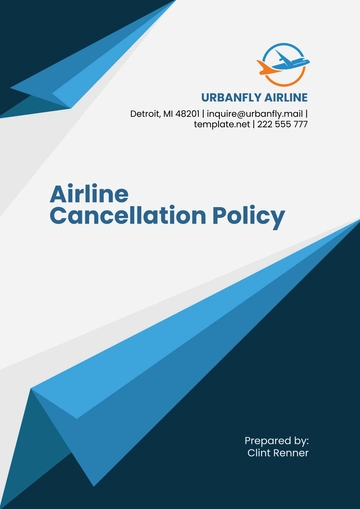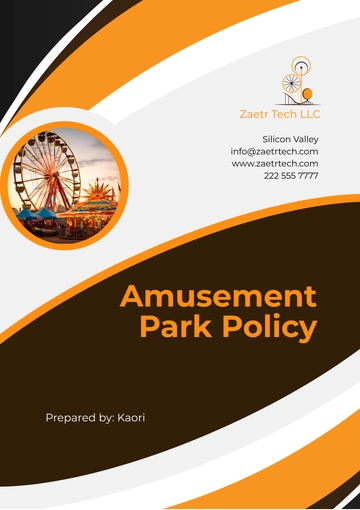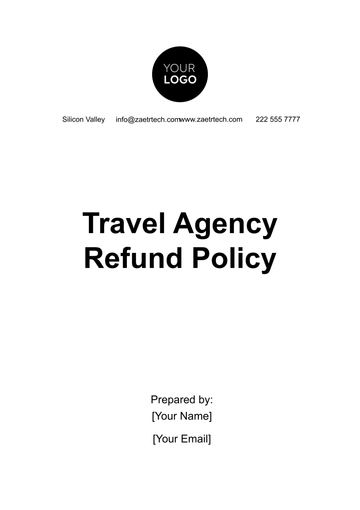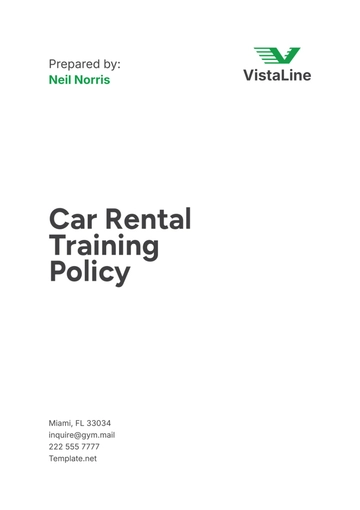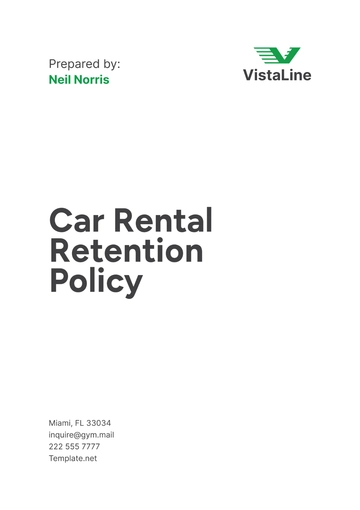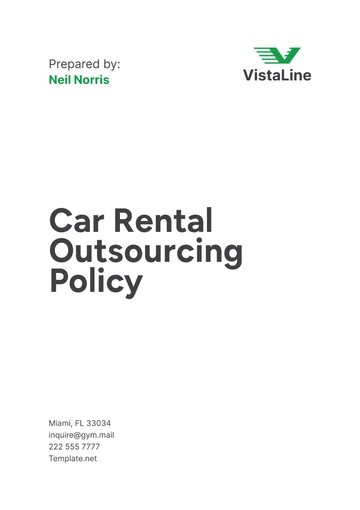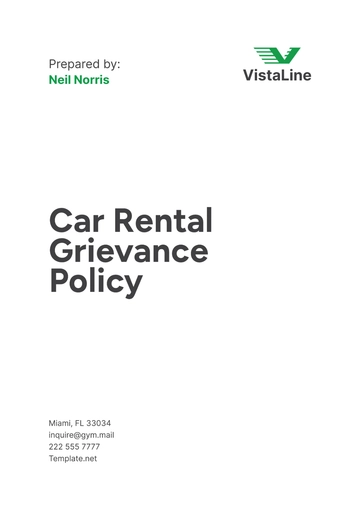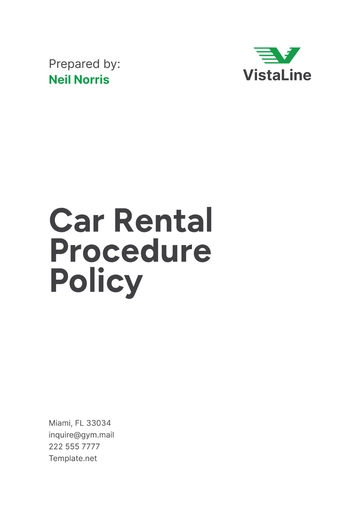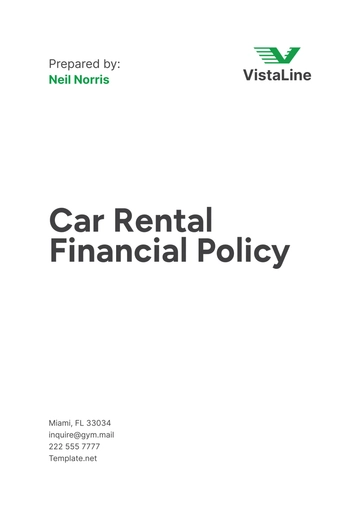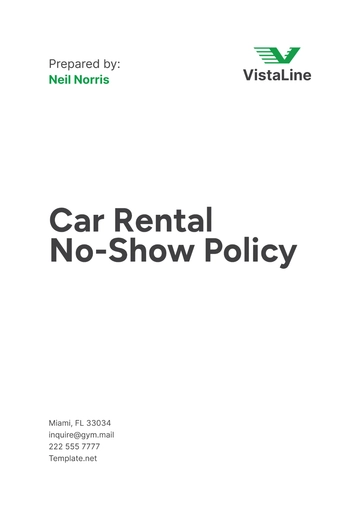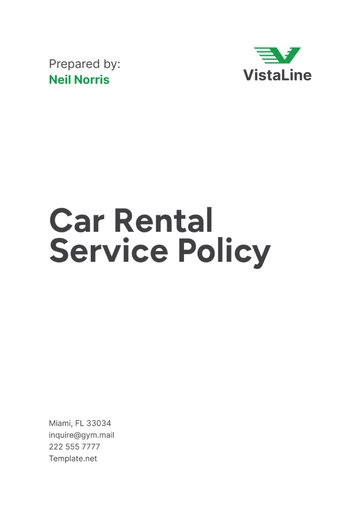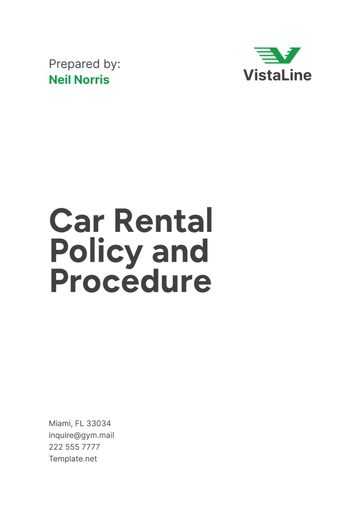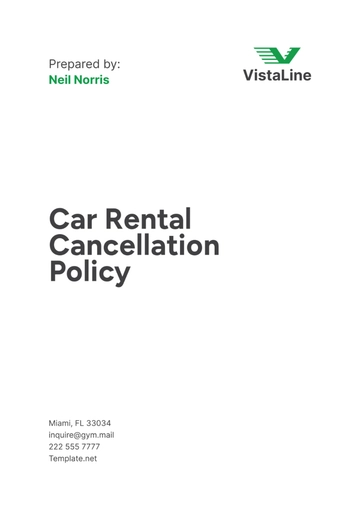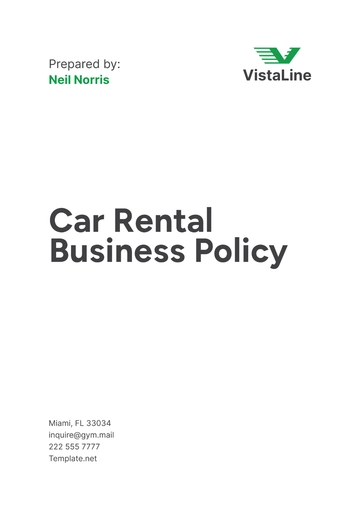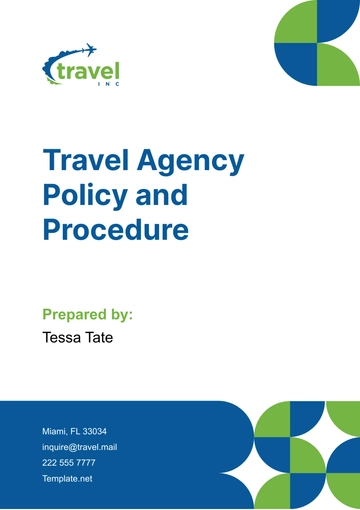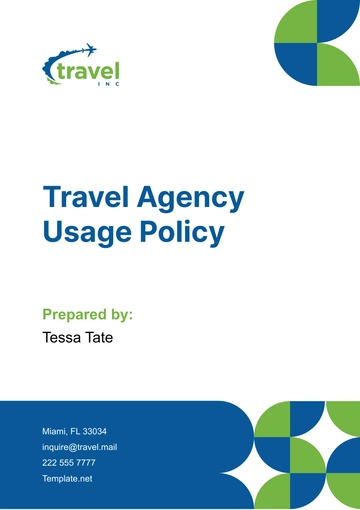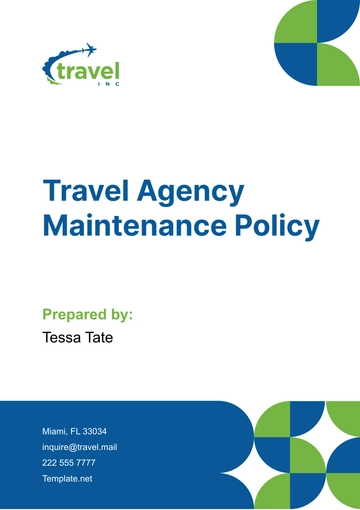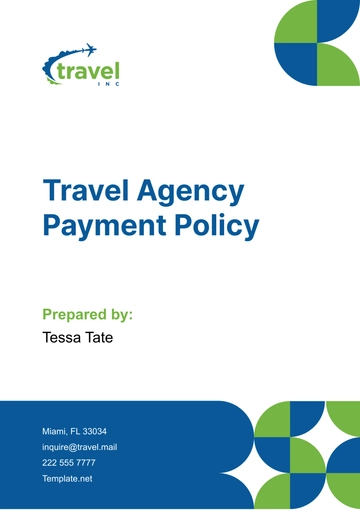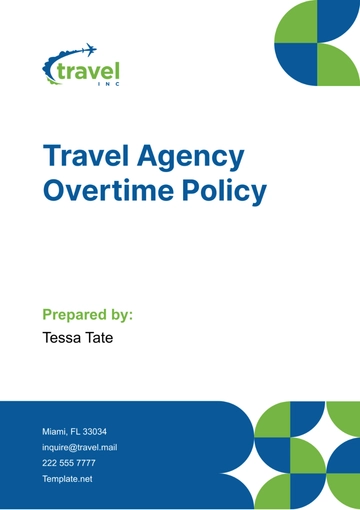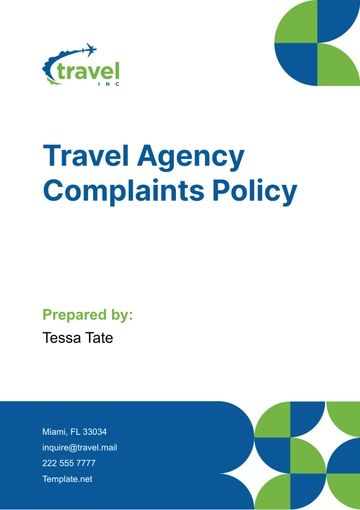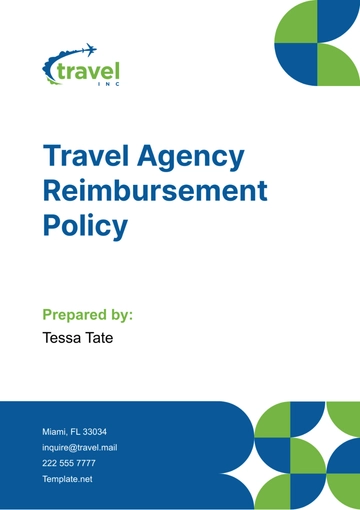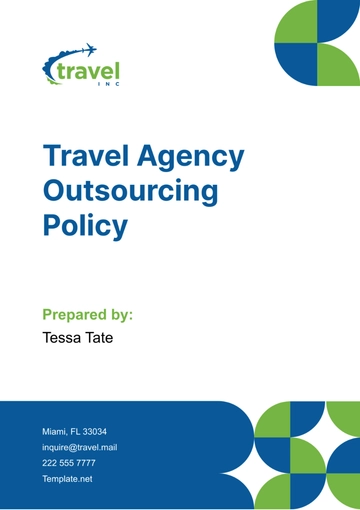Free Travel Agency Maintenance Policy
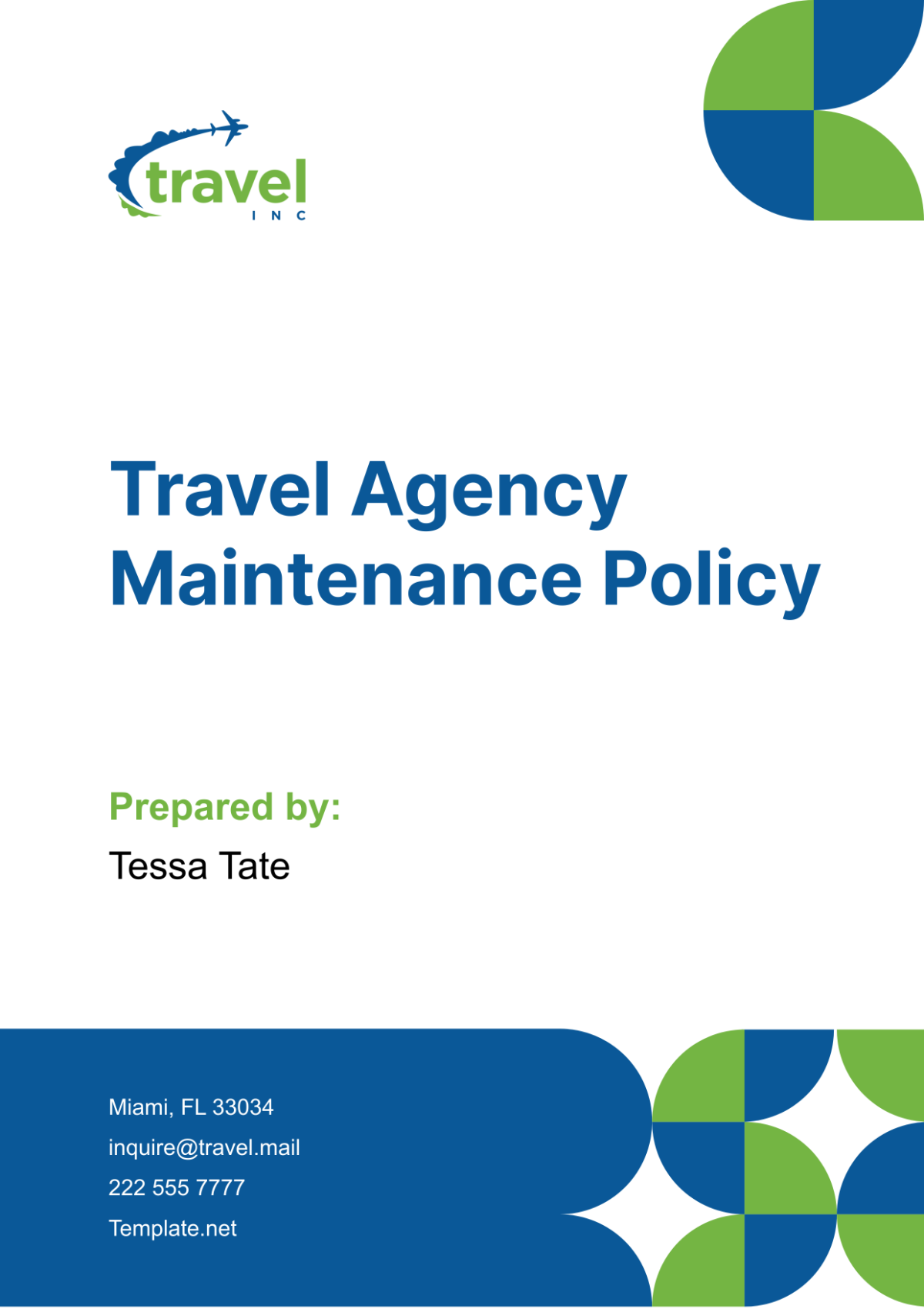
Introduction
The Maintenance Policy at [Your Company Name] is established to ensure that all company assets, including vehicles, equipment, and premises, are kept in optimal working condition. This policy is essential for the safety, efficiency, and reliability of our services. This policy applies to all company-owned and operated facilities and equipment used in the course of delivering travel services.
Regular Maintenance Schedule
Adhering to a regular maintenance schedule is crucial to prevent disruptions and extend the lifespan of our assets. Maintenance schedules are rigorously followed based on the type of asset and manufacturer recommendations. This includes daily, weekly, and monthly checks and servicing as required.
Maintenance Schedule Table:
Asset Type | Maintenance Frequency | Specific Tasks |
|---|---|---|
Vehicles | Monthly | Oil change, tire check, brake inspection |
Equipment | Bi-weekly | Calibration, cleaning, functionality tests |
Office Facilities | Weekly | Safety equipment checks, HVAC inspection |
Maintenance tasks are assigned to qualified technicians. Records of all maintenance activities are kept meticulously to track the health of each asset and ensure compliance with safety standards.
Unexpected Repairs
Despite meticulous maintenance and preventative measures, unexpected repairs can occur. This section delineates our systematic approach to handling such incidents swiftly and efficiently to minimize disruption and ensure continuous operation.
Response Plan: Quick and effective management of unexpected repairs is a priority to reduce downtime and maintain service quality. We maintain a network of skilled technicians and a well-stocked inventory of parts to address and resolve issues promptly.
Priority Handling: Critical assets, whose functionality is essential to our operations, will receive priority in the repair process to ensure minimal impact on our services.
Communication: Effective communication is maintained with relevant departments to keep all stakeholders informed about the status of the repair and expected resolution times.
Procedure:
Reporting: Immediate reporting of any malfunction or breakdown is crucial. Employees must use the designated Incident Reporting System available via our intranet or direct communication channels to alert the maintenance department.
Assessment: Upon notification, a technician will be dispatched to assess the situation. A preliminary diagnosis will be conducted to determine the nature and extent of the repair needed.
Action: Repairs are initiated immediately if the required resources and parts are available. For more complex issues requiring specialized parts or skills, temporary solutions may be implemented to ensure operational continuity until the repair can be completed.
Documentation: All incidents and actions taken are thoroughly documented in our Maintenance Management System. This documentation includes details of the malfunction, steps taken to rectify the issue, and any parts used in the process. This record-keeping is vital for future reference and analysis to improve our maintenance strategies.
Unexpected Repair Handling Table:
Step | Responsible Party |
|---|---|
Report | All Employees |
Assess | Assigned Technician |
Action | Maintenance Team |
Document | Maintenance Team |
Communicate | Maintenance Manager |
This comprehensive approach to handling unexpected repairs ensures that [Your Company Name] maintains high operational standards and minimizes inconvenience to our clients and staff. By prioritizing rapid response and thorough documentation, we not only fix issues efficiently but also enhance our preventive maintenance protocols based on insights gained from these incidents.
Preventative Measures
Preventative maintenance is critical to avoiding costly repairs and downtime. This proactive approach focuses on maintaining equipment before issues arise. Our preventative measures include regular inspections, the replacement of wear-and-tear parts before they fail, and performance assessments to identify potential problems.
Strategy Details:
Routine Inspections: Regular inspections are the first line of defense against potential equipment failures. These are conducted according to a set schedule and include a thorough examination of all critical systems and components to identify signs of wear and potential issues before they develop into serious problems.
Preventive Maintenance: Beyond inspections, preventive maintenance involves the scheduled servicing of equipment to keep it running efficiently. This includes cleaning, lubricating, and replacing parts that are prone to wear and tear before they fail.
Performance Monitoring: Using advanced monitoring tools, equipment performance is continuously analyzed. This data-driven approach helps predict potential breakdowns and optimizes maintenance schedules based on actual equipment usage and condition rather than solely on predetermined intervals.
Procedure:
Scheduling Maintenance: Maintenance managers are responsible for developing and overseeing the maintenance schedule. This schedule is based on manufacturer guidelines, past maintenance records, and usage patterns of each piece of equipment.
Conducting Inspections and Maintenance: Trained technicians carry out inspections and maintenance tasks. All activities are conducted using standardized checklists to ensure completeness and consistency.
Updating Records: After each inspection or maintenance activity, technicians update the maintenance records with details of the work performed, findings, and any parts replaced. This documentation is crucial for tracking the health of the equipment and planning future maintenance.
Review and Adjust Maintenance Schedules: Maintenance schedules are reviewed regularly to incorporate insights from recent inspections, maintenance activities, and equipment performance data. This dynamic adjustment ensures that our maintenance efforts are both effective and efficient.
Preventative Maintenance Table:
Asset Type | Inspection Frequency | Preventative Actions |
|---|---|---|
Vehicles | Quarterly | Engine diagnostics, alignment checks |
Equipment | Monthly | Software updates, hardware checks |
Office Facilities | Annually | Fire system test, electrical system audit |
Schedules for preventative maintenance are developed annually and adjusted based on equipment usage and performance data. All preventative maintenance activities are documented for future reference and compliance checks.
Training and Compliance
Effective training and strict compliance are fundamental to maintaining the highest standards of maintenance and operational safety at [Your Company Name]. This section outlines our comprehensive approach to ensuring that all personnel are proficient in the latest maintenance techniques and adhere to industry standards and company policies.
Training Program:
Initial Training: All new hires in the maintenance department undergo a rigorous training program that covers all aspects of our maintenance operations. This includes hands-on training with all types of equipment and systems they will encounter, as well as safety procedures and company-specific protocols.
Ongoing Training: To keep up with technological advancements and changes in regulatory standards, ongoing training sessions are scheduled throughout the year. These sessions are designed to refresh skills and knowledge and introduce new methods and tools relevant to our operations.
Specialized Training: For technicians working with specialized equipment or in high-risk areas, additional specialized training is provided to ensure they have the expertise required to perform their duties safely and effectively.
Compliance Monitoring:
Regular Audits: Compliance with training and maintenance standards is monitored through regular audits. These audits help identify any gaps in skills or knowledge and ensure that all practices are up to date with legal and safety standards.
Certifications: Technicians are required to obtain and maintain relevant certifications. Regular assessments are conducted to verify that all personnel meet the necessary qualifications to perform their assigned tasks.
Record Keeping: Detailed records of all training sessions, certifications, and compliance audits are maintained. These records are essential for verifying compliance with internal policies and external regulations, and they serve as a resource for continuous improvement.
Procedure:
Scheduling: The HR department schedules training and certification sessions in coordination with department heads to ensure minimal disruption to our operations.
Participation: Attendance at all scheduled training sessions is mandatory, and compliance is tracked through our HR management system.
Evaluation: After each training session, participants are evaluated to assess their understanding and capability to apply what they have learned. Feedback from these evaluations is used to improve future training programs.
Reporting: Compliance and training outcomes are regularly reported to senior management, providing insights into the effectiveness of our training programs and any areas needing attention.
Training and Compliance Table:
Activity Type | Frequency | Documentation Required |
|---|---|---|
Initial Training | Upon hiring | Training completion certificates |
Ongoing Training | Bi-annually | Attendance records, skill assessment results |
Specialized Training | As required | Specialist certification |
Compliance Audits | Annually | Audit reports, corrective action plans |
This structured approach to training and compliance ensures that [Your Company Name] not only meets but exceeds industry standards, fostering a culture of safety and excellence that upholds our reputation and guarantees the highest level of service delivery.
Contact Information
Employees and managers can contact our maintenance department directly:
Phone: | [Your Company Number] |
|---|---|
Email: | [Your Company Email] |
This Maintenance Policy is effective as of [Month Day, Year] and is subject to periodic review and updates to reflect new technologies, changes in industry practices, and feedback from our operations. [Your Company Name] is committed to maintaining high standards of operational integrity and safety through diligent maintenance practices.
- 100% Customizable, free editor
- Access 1 Million+ Templates, photo’s & graphics
- Download or share as a template
- Click and replace photos, graphics, text, backgrounds
- Resize, crop, AI write & more
- Access advanced editor
Maintain high operational standards with Template.net's Travel Agency Maintenance Policy Template. This fully editable and customizable template in our Ai Editor Tool provides detailed instructions for the regular maintenance of facilities and equipment, ensuring safety, efficiency, and the longevity of your service capabilities.
You may also like
- HR Policy
- Restaurant Policy
- Company Policy
- Accounting Policies and Procedures
- Website Policy
- Privacy Policy
- Safety Policy
- School Policy
- IT and Software Policy
- Law Firm Policy
- Construction Policy
- Interior Design Policy
- Travel Agency Policy
- Education Academic Policy
- Security Policy
- Real Estate Policy
- Expense Policy
- Software Policy
